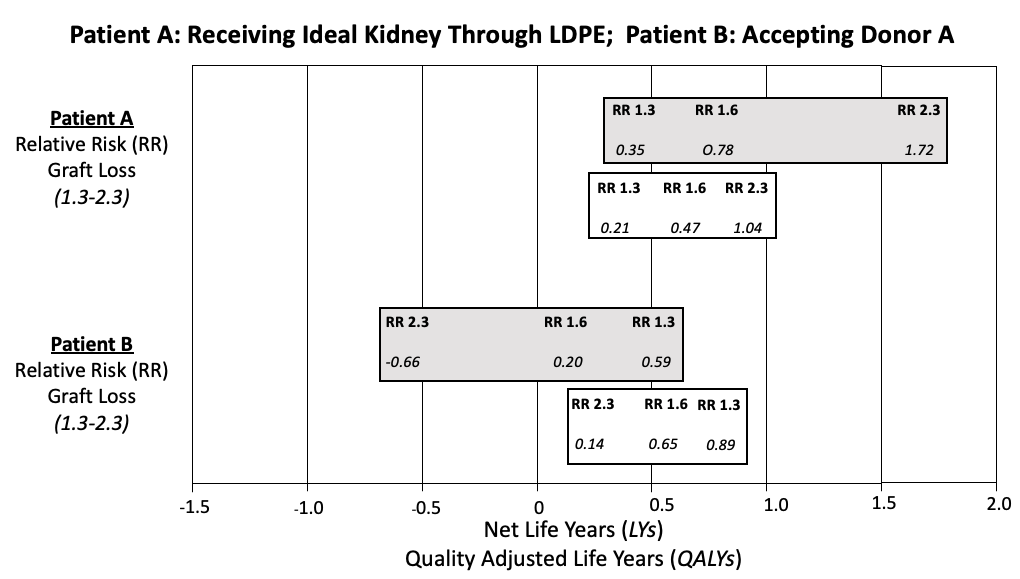In Search of a Better Outcome: Opting Into the Live Donor Paired Kidney Exchange Program
1Nova Scotia Health Authority Division of Nephrology, Departm, Halifax, NS, Canada, 2Medicine, Dalhousie University, Halifax, NS, Canada
Meeting: 2021 American Transplant Congress
Abstract number: 1073
Keywords: Donation, Kidney, Living donor
Topic: Clinical Science » Kidney » Kidney Paired Exchange
Session Information
Session Name: Kidney Paired Exchange
Session Type: Poster Abstract
Session Date & Time: None. Available on demand.
Location: Virtual
*Purpose: Live donor kidney transplantation is the best option for patients with End-Stage Kidney Disease (ESKD), if a donor is available. However, this may not be the best option if a patient’s donor is older and considerably smaller in weight. A patient (A) with a less than ideal donor (Donor A) might enter into a Live Donor Paired Exchange (LDPE) program with the hopes of exchanging for a better-quality organ. A second patient (B) who is in the LDPE may or may not benefit from this exchange with Donor A.
*Methods: We performed a medical decision analysis using a Markov model to examine the conditions that favour patient A entering into the LDPE compared to accepting their intended Donor A directly. For the baseline case we examined Patient A and B both aged 45 years, both transplanted after 1 year in LDPE, and a risk of graft loss of 1.6 for Donor A relative to an ideal donor. We also explored circumstances where patient B also benefits by accepting a lower-quality organ from Donor A rather than remaining on the LDPE waitlist.
*Results: Under select circumstances a paired exchange could benefit (more life years) both patient A and B. The net benefit (or loss) of entering the LDPE differs by recipient age, donor organ quality, likelihood of patient B being transplanted in LDPE, and likelihood of patient A finding an ideal donor in the LDPE. Under the baseline assumptions, Patient A stands to gain 0.78 LYs if transplanted in LDPE by the end of 1 year compared to undergoing directed transplantation with their current donor. There would also be a gain of 0.47 QALYs. At the same time, Patient B might gain 0.20 LYs (0.65 QALYs) by opting for a lower quality organ from Donor A compared to staying on the LDPE waitlist. In a sensitivity analysis, we varied the relative risk of the Donor A organ and show how this impacted both Patient A and B following transplant through the LDPE versus direct transplant of Patient A with the Donor A kidney, Figure 1.
*Conclusions: This study shows there are ways to increase live donor utilization and effectiveness that may require changes to the LDPE process.
To cite this abstract in AMA style:
Vinson AJ, Kiberd B, Tennankore KJ. In Search of a Better Outcome: Opting Into the Live Donor Paired Kidney Exchange Program [abstract]. Am J Transplant. 2021; 21 (suppl 3). https://atcmeetingabstracts.com/abstract/in-search-of-a-better-outcome-opting-into-the-live-donor-paired-kidney-exchange-program/. Accessed December 24, 2025.« Back to 2021 American Transplant Congress

